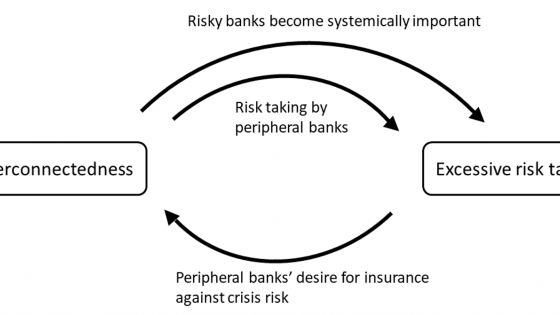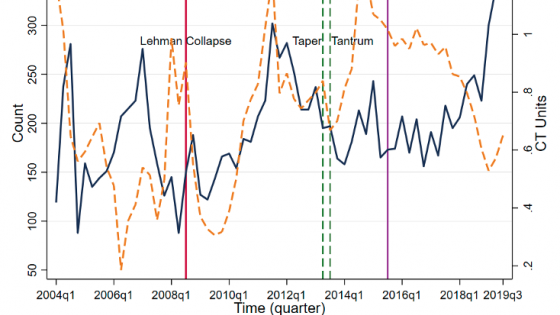DP8764 Aggregate Investment Externalities and Macroprudential Regulation
Evidence suggests that banks tend to lend a lot during booms, and very little during recessions. We propose a simple explanation for this phenomenon. We show that, instead of dampening productivity shocks, the banking sector tends to exacerbate them, leading to excessive fluctuations of credit, output and asset prices. Our explanation relies on three ingredients that are characteristic of modern banks' activities. The first ingredient is moral hazard: banks are supposed to monitor the small and medium sized enterprises that borrow from them, but they may shirk on their monitoring activities, unless they are given sufficient informational rents. These rents limit the amount that investors are ready to lend them, to a multiple of the banks' own capital.
The second ingredient is the banks' high exposure to aggregate shocks: banks' assets have positively correlated returns. Finally the third ingredient is the ease with which modern banks can reallocate capital between different lines of business. At the competitive equilibrium, banks offer privately optimal contracts to their investors but these contracts are not socially optimal: banks' decisions of reallocating capital react too strongly to aggregate shocks. This is because banks do not internalize the impact of their decisions on asset prices. This generates excessive fluctuations of credit, output and asset prices. We examine the efficacy of several possible policy responses to these properties of credit markets, and derive a rationale for macroprudential regulation.


